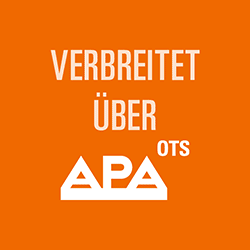For the first time, the aid organization had a blood unit delivered by drone, and it did so automatically. A project that is groundbreaking.
Lilienfeld (OTS) – A person in Austria needs a blood supply every 90 seconds. When a hospital calls for supplies, a car with a driver sets off to deliver the life-saving blood. The Red Cross is now testing new ways to save time and resources: For the first time, a blood unit was delivered by drone. And fully automatically. The action is symbolic, the flight from the Red Cross district office in Lilienfeld to the nearby state hospital only took a few minutes, but it shows how drones can make it easier to help in the future.
Promise for the future
“We are already using drones, for example when searching for people or for quickly assessing the situation after major accidents,” says Gerry Foitik, Federal Rescue Commander of the Red Cross. “Delivering blood products with drones is another promising application. Drones are not just fleeting toys, they are here to stay. The blue light organizations hope that more will be possible with their use in the future and that the legal framework for this will be created. ”In Rwanda, for example, blood products are already being delivered by drones. Medical products are already being transported in this way in Switzerland.
A change in EU regulations has brought some initial relief, but the security requirements are high. Flights like the one in Lilienfeld must be applied for in detail. DI Dr.-Ing Holger Friehmelt, Head of the Aviation Institute at FH JOANNEUM, provided scientific support for the project. “The necessary technologies are available worldwide. Here we were able to demonstrate for the first time with Austrian know-how how one can enable meaningful transport in a real environment in close cooperation with the licensing authority, ”he says. “It is important to involve all those involved. In addition to the Red Cross, these were the remote flight monitors, neighbors and not to forget the well-trained young engineers, for whom exciting new fields of activity are opening up. This is why this flight demo is so exciting for FH JOANENUM with its aviation courses. “
One project, many people involved
“The close cooperation and risk analysis between authorities, science and industry were decisive for the success of the project. Congratulations to everyone involved, ”says State Secretary for Aviation, Magnus Brunner. “To help people in need, availability and time are essential factors. By transporting blood products, the Red Cross and its partners have proven that the scope of drones goes far beyond the detection of dangers and the search for people. With the national implementation of the EU drone regulation and the recently enacted regulations in the Aviation Act, we have created the framework for the safe use of drones. “
“The areas of application for drones are becoming more and more diverse and completely new possibilities are opening up, especially for emergency organizations,” adds Austro Control Managing Director Valerie Hackl: “This first flight is the best example. I am delighted that Austro Control has accompanied the project from the start and was able to approve and enable the drone flight in compliance with all safety criteria. “
Mastering complexity in flight
“We are happy about the project. The “Falcon B” model we use is one of the world’s leading logistics drones and is used by DHL in China, among others. This enables us to transport parcels up to 5 kilograms at a speed of 80 km / h around 20 km – fully automatically. Our solution can be scaled to any number of drones, ”says Andreas Perotti, CMO Europe at EHang.
The technical challenge of an automatic flight is to master the complexity – and to constantly calculate collision-free backup paths during positioning, i.e. retreat options that deviate from the optimal flight path.
“As the use of professional drones will inevitably increase, Thales is bringing its global expertise in the fields of aviation, air traffic management and cybersecurity to enable safe drone operation,” explains Hannes Boyer, CEO of Thales in Austria, another partner of the project. “Specifically, we were able to support this project thanks to our ScaleFlyt solutions for identifying drones with remote ID and secure flight management via the SOARIZON digital service platform.”
Photos: click here
Password: R1K1
Moving image: on request
Inquiries & contact:
Dr. Stefan Müller
Austrian Red Cross, media service
Tel.: +43/1/589 00-352
Car: +43/664 122 31 37
stefan.mueller@roteskreuz.at
– .


